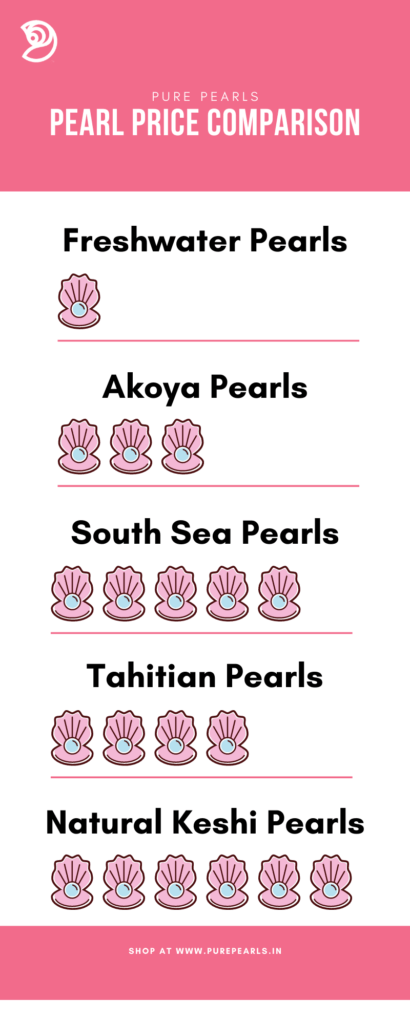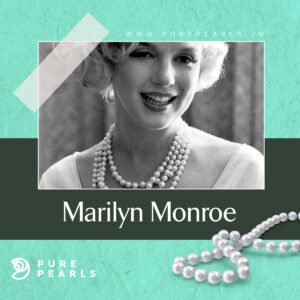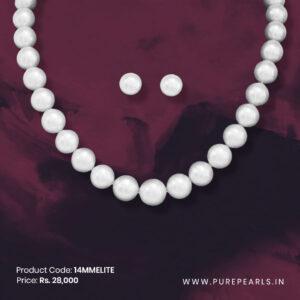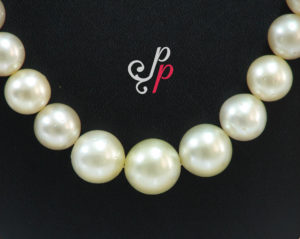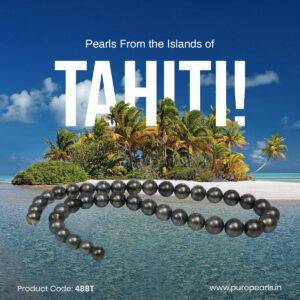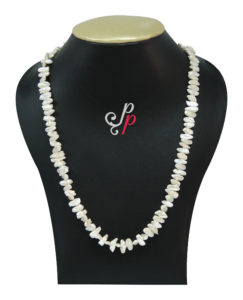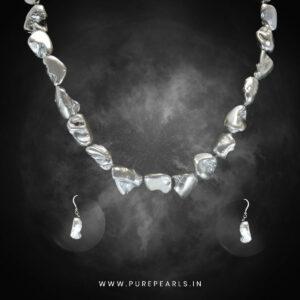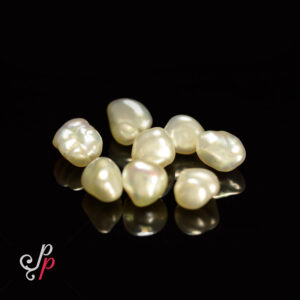Pearls have captivated the hearts of women for thousands of years. Several different types of pearls have adorned the rich and famous, from Marilyn Monroe to Queen Elizabeth. Even today, they continue to remain the most sought-after gems.
Read: Style icons who loved their pearls.
However, not all pearls are the same. Some are rarer and more expensive; some are rounder, while others have a potato-like shape. Some pearls are black, while others are white, pink or even golden. So, how do you tell one pearl from another?
This guide will give you complete information about the various kinds of pearls, compare the costs of each type along with pictures of different types of pearls.
Table of Contents
How is a Pearl Grown?
Pearls are gems that are very rare and hard to find in their natural habitats. Moreover, human exploitation has severely affected mollusc colonies in the open seas and rivers.
Pearls are formed as protection against irritants such as sand or fishbone that float into the shell of a pearl oyster. As a defence mechanism, the oyster secretes layers and layers of nacre over the irritant which over time eventually forms a pearl.
Over times, humans learned to replicate the natural process in a controlled environment by rearing oysters and producing pearls.
Read: How did humans start to culture pearls by replicating the natural process?
Pearls can be broadly classified into two types;
- Freshwater Pearls
- Saltwater Pearls
Both freshwater pearls and saltwater pearls are distinct features. However, saltwater pearls tend to have a greater perceived value because they are rare, large and more lustrous.
In this article, we will talk about 14 types of pearls:
- Freshwater Pearls
- Saltwater Pearls
- Akoya Pearls
- South Sea Pearls
- Tahitian Pearls
- Biwa Pearls
- Baroque Pearls
- Keshi Pearls
- Seed Pearls
- Rice Pearls
- Round Pearls
- Button Pearls
- Coin Pearls
- Mabe Pearls (a. k. a. Blister Pearls)
What Are Freshwater Pearls?
This is the most common type of pearl and also the most affordable. Freshwater pearls are grown in molluscs as opposed to other pearls which are grown in oysters.
Unlike saltwater cultured pearls, freshwater pearls are made entirely of solid nacre as they lack bead nuclei. What this means for you is that these pearls are more durable and scratch-resistant compared to saltwater pearls.
Most freshwater pearls have an irregular shape because they lack a bead nucleus.
Only about 2% of freshwater pearls are round or almost round.
The irregularly shaped pearls are known as baroque or semi-baroque. This is what makes them unique and fashionable.
These pearls are the most commonly used in making Hyderabadi pearl jewellery.
Freshwater pearls come in the widest range of natural colours!
| Time to Produce a Pearl | 1 to 2 years |
| Colour Range | White, Peach, Lavender, Orange, Red and more! |
| Typical Sizes | 1mm to 15mm |
| Common Shapes | Potato-shaped, button-shaped, round (spherical) |
| Durability | Very high |
Note: Freshwater pearls do not come in black colour. However, you can buy dyed black freshwater pearls from Pure Pearls.
What Makes Cultured Freshwater Pearls Unique?
- The greatest range of sizes
- Freshwater pearls can be as small as 1mm
- Widest range of natural colours
- Available in many shapes
- Most durable type of pearls
What Are Saltwater Pearls?
Saltwater pearls are much rarer than freshwater pearls and are also more expensive. Although saltwater pearls are rare, they seem to be more widely known.
The popularity of saltwater pearls can be attributed to their historical significance. Most celebrities like Queen Elizabeth, Princess Diana, Coco Chanel, Priyanka Chopra and Deepika Padukone wear saltwater pearls.
Since saltwater pearls have a much larger nucleus, they are also much rounder than their freshwater counter pearls. Furthermore, since saltwater mussels are entirely different species, you can also expect a different range of colours.
The hues of saltwater pearls are typically warmer, and the shine is softer while being more lustrous, thus adding to their value.
| Time to Produce a Pearl | 5 to 7 years |
| Colour Range | Creamy white, golden, light pink, silver, black, peacock hues |
| Typical Sizes | 7mm to 18mm |
| Common Shapes | Potato-shaped, button-shaped, round (spherical) |
| Durability | Very high |
Note: Saltwater pearls are typically larger in size. Small saltwater pearls are incredibly rare (except Akoya Pearls, which are typically around 3mm). At Pure Pearls, we have a few of these small and rare saltwater pearls that measure about 5mm.
What Makes Saltwater Pearls Unique?
- Larger sizes are more easily available
- Rounder pearls
- Saltwater pearls are rarer
- Colours are warmer
- Soft shine
- More lustrous
Types of Saltwater Pearls
- Akoya Pearls
- South Sea Pearls
- Tahitian Pearls
What Are Akoya Pearls?
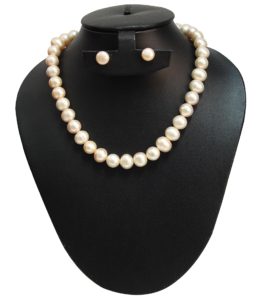
Akoya Pearls were the first round cultured pearls to be marketed to the world. So, the chances of you having seen an Akoya Pearl necklace are greater than freshwater necklaces.
Akoya Pearls are the classic white pearls that you typically see in movies and award functions. They stand out from the rest because of their brilliant lustre.
Their rich look and timeless elegance make them ideal as accessories for weddings and big occasions. Hence, they remain a favourite among brides and jewellery & fashion designers.
Akoya Pearls are often white in colour, like the inside of the Akoya Pearl Oyster. Nevertheless, they also come in pink, and cream overtones.
Characteristics of Akoya Pearls | |
| Origin | Seas of Japan |
| Colours | Pure White, White with pink and cream overtones |
| Size | 2mm to 7mm |
What Are South Sea Pearls?
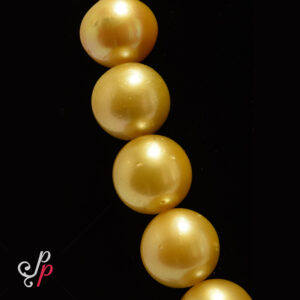
South Sea Pearls are the largest and one of the rarest of pearls.
The South Sea Pearls can grow much larger than other pearls because of the size of the oyster that produces them – the Pinctada Maxima Oyster.
Because of their large size, growing them is painstaking and takes that much more time. This is also the reason South Sea pearls are expensive.
Valued for their lustre and rich colour, they come in a variety of gorgeous hues ranging from glossy white, silky silver, creamy pink to deep golden tones.
Characteristics of South Sea Pearls | |
| Origin | Seas of Australia, Philippines and Indonesia |
| Colours | White, Silver, Golden, White with pink overtones |
| Size | 8mm to 18mm |
What Are Tahitian Pearls?
Tahitian Pearls are the only pearls that come in naturally black, grey and peacock colours. They are produced by the Black-Lipped Pinctada Margaritifera Oyster found in the seas of French Polynesia.
Mostly black, the Tahitian Pearls also come in shades of dark green, brown and blue.
High-quality Tahitian Pearls have excellent lustre. Sometimes the lustre is so high, that it has a metallic sheen! This feature, along with its fascinating colours, makes Tahitian Pearls extremely valuable and very fashionable.
Learn more about Tahitian Pearl jewellery here.
Characteristics of Tahitian Pearls | |
| Origin | Seas of Tahiti and French Polynesia |
| Colours | Black, Grey, Dark Green, Blue-Green, Bronze |
| Size | 7mm to 16mm |
Unconventional Pearl Types
Some pearl types deserve a spot of their own due to their unique features and their mark in history.
- Biwa Pearls
- Baroque Pearls
- Keshi Pearls
What Are Biwa Pearls?
Biwa Pearls get their name from Lake Biwa in Japan, from where they originate. They are freshwater pearls cultured from mussels.
They are known for their unique shapes and unusual contours. Typical Biwa Pearls resemble rice grains or sticks.
They come in natural colours – white and pink. Occasionally, natural green and blue are also found.
Many Japanese people believe that Biwa Pearls are known for their healing properties and cleanse the thoughts that flow in the mind and body of the wearer.
What Are Baroque Pearls?
What makes Baroque Pearls distinct from the conventional round-shaped pearls is that that they come in fun shapes and sizes. This feature makes Baroque pearls a perfect choice to create gorgeous pieces of jewellery.
Baroque pearls come in a variety of exciting shapes like a coin (round and flat, with a smooth surface), egg (oval like an egg), rice, cross, square etc.
What Are Keshi Pearls?
Keshi Pearls are known for their distinct shapes while being exquisitely lustrous. Therefore, these pearls are extremely trendy and are great for free-form fashion.
Keshi Pearls may be freshwater or saltwater pearls, while saltwater Keshi Pearls being the most popular.
These pearls also hold high regard among people who believe in Astrology.
Pure Pearls is one of the very few jewellery brands that sell incredibly rare saltwater natural Keshi Pearls. Explore the collection while it lasts!
Types of Pearls List Based on Shape
In addition to the pearls mentioned above, you might have come across several other names, like the ones given below.
- Seed Pearls
- Rice Pearls
- Round Pearls
- Button Pearls
- Coin Pearls
- Mabe Pearls or Blister Pearls
All these names refer to the shape of the pearl and/or their origin and not the typical pearl type.
Seed Pearls
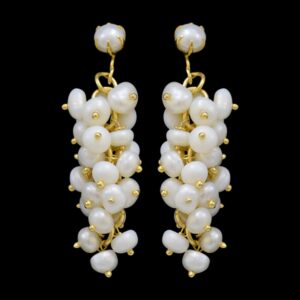
| Culture | Mosty freshwater |
| Origin | Freshwater pearl farms across Asia |
| Shape | Spherical or nearly-round |
| Colour | White, Cream |
| Size | 2mm to 4mm |
Rice Pearls
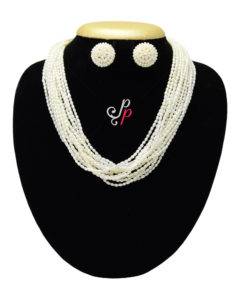
| Culture | Mosty freshwater |
| Origin | Freshwater pearl farms across Asia |
| Shape | Long rice-like |
| Colour | Off-white, Yellowish |
| Size | 2mm to 4mm |
Round Pearls
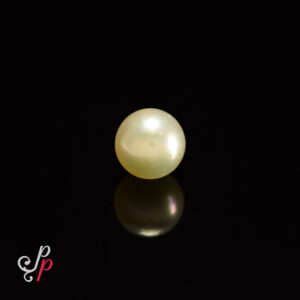
| Culture | Freshwater and Saltwater |
| Origin | Lakes, ponds and seas |
| Shape | Spherical |
| Colour | White, Black, Grey, Pink, Gold and many more! |
| Size | 4mm to 18mm |
Button Pearls
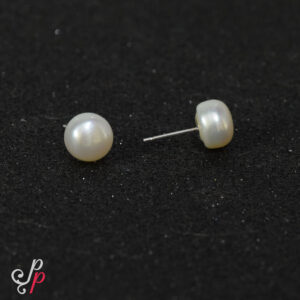
| Culture | Mosty freshwater |
| Origin | Freshwater pearl farms across Asia |
| Shape | Semi-spherical |
| Colour | White, Black, Grey, Pink, Gold and many more! |
| Size | 3mm to 7mm |
Coin Pearls
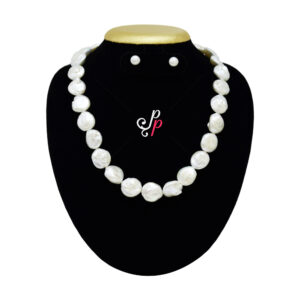
| Culture | Mosty freshwater |
| Origin | Freshwater pearl farms across Asia |
| Shape | Flat and circular like a coin |
| Colour | White, Black, Grey, Pink, Gold and many more! |
| Size | 3mm to 7mm |
Mabe Pearls or Blister Pearls
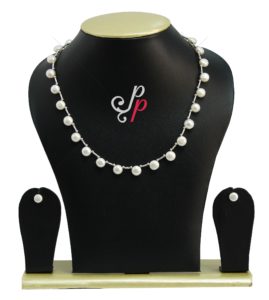
| Culture | Mosty freshwater |
| Origin | Freshwater pearl farms across Asia |
| Shape | Flat-back with spherical protrusion |
| Colour | White, Black, Grey, Pink, Gold and many more! |
| Size | 3mm to 7mm |
Price Comparison of Bestselling Pearl Types
Below is a simple price comparison of different kinds of pearls by Pure Pearls in India.
If you are looking for detailed price comparison, then check out the Complete Pearl Pricing Guide by Pure Pearls.
